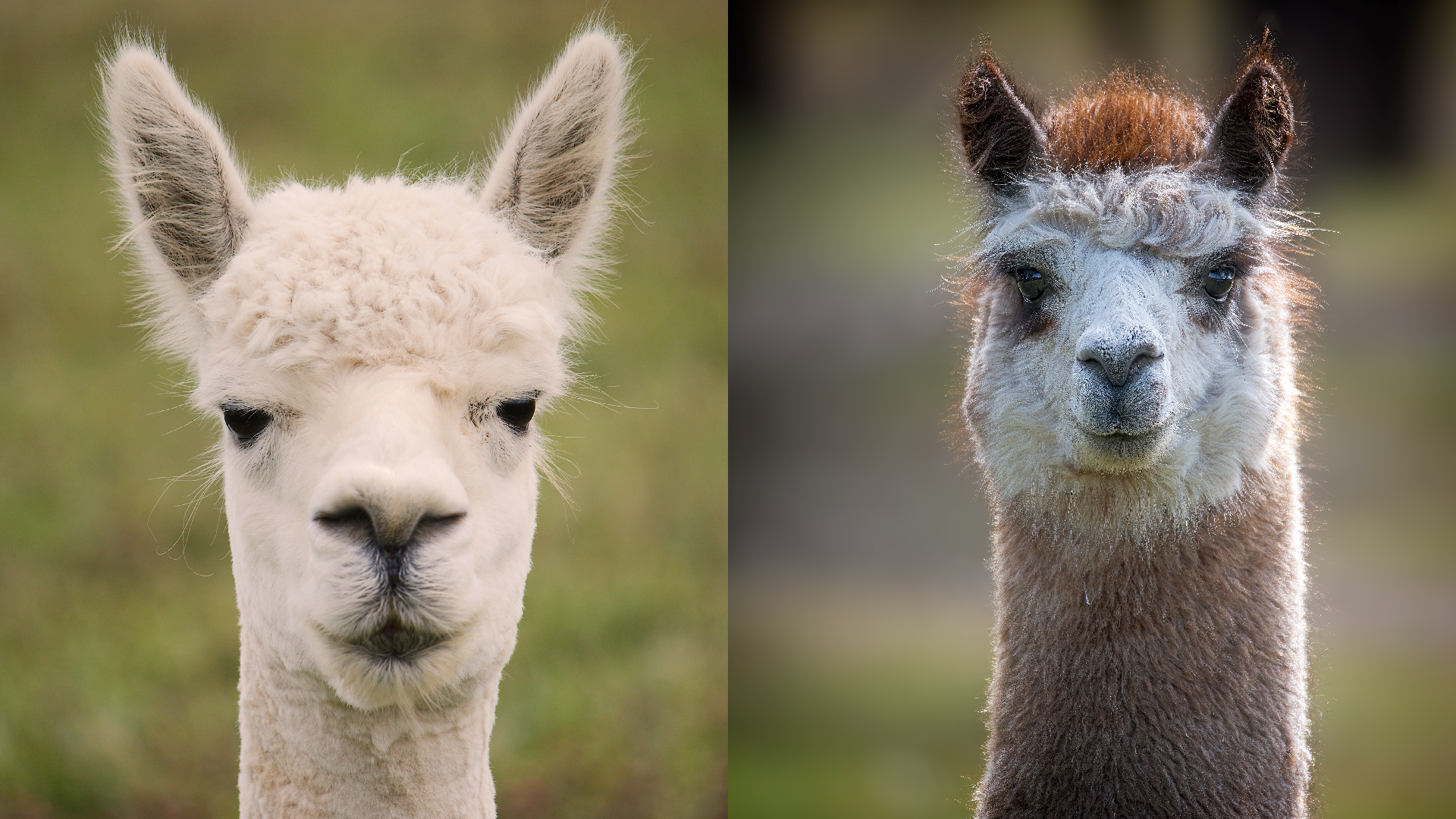It’s easy to mistake llamas and alpacas for each other: Both are slender fluffy four-legged mammals with long necks that live in herds. So what’s the difference between these two species?
“That is the most common question the public asks us,” Rebecca Gill, co-owner of Cotton Creek Farms, a Michigan farm that is home to both animals, told Live Science.
Llamas (Lama glama) and alpacas (Lama pacos or Vicugna pacos, depending on whom you ask) are both camelids — members of the camel family, said David Anderson, associate dean for research and graduate studies at the University of Tennessee at Knoxville College of Veterinary Medicine.
“The camelids originally arose in the western part of North America,” Anderson told Live Science. When the Americas and Asia were still connected by the Bering Land Bridge during the last ice age, “a migration occurred across north to Asia, and south to Central and South America.”
The camelids that migrated to northern Africa, the Middle East and Asia became the dromedary and bactrian camels, which have one hump and two humps, respectively. The ones that migrated to Central and South America gave rise to llamas and alpacas, as well as their wild progenitors: guanacos (Lama guanicoe) and vicuñas (Vicugna vicugna), Anderson explained.
“Here in the United States, llamas and alpacas are often thought of as foreign species, but actually, from an evolutionary standpoint, they originated here, so I think of their presence here as more of a repatriation,” Anderson said.
Related: What do camels eat in the desert?
Research published in 2020 suggested that the guanaco was domesticated into the llama and the vicuña into the alpaca, the latter of which happened around 6,000 to 7,000 years ago. However, the origins of the llamas and alpacas remain disputed — “it’s not necessarily set in stone,” Anderson said.
Llamas versus alpacas
The most obvious difference between llamas and alpacas is that llamas weigh more than twice as much as alpacas. Llamas range from about 280 to 450 pounds (130 to 200 kilograms) and stand about 45 inches (115 centimeters) tall at their withers — the highest part of their back. Alpacas, by contrast, weigh about 100 to 175 pounds (45 to 80 kg) and stand about 36 inches (90 cm) at their withers, according to Rutgers University. “Even the largest alpaca doesn’t come close to a llama in size,” Gill said.
Alpacas have pear-shaped ears and short noses, whereas llamas have longer, banana-shaped ears and lengthier faces. Alpacas also have fine, silky hair, whereas llamas have wiry, coarse hair, per Rutgers University.

Anderson said llamas are often used as pack animals because of their size and strength, which explains why the Incas used llamas, as well as their poop, to help them expand and fertilize their empire. Meanwhile, alpacas were bred and relied on more for textiles. “Alpaca fiber is very soft and luxurious and extremely warm,” Gill added. In contrast, “you would not use llama fiber in anything used next to the skin.”
Llamas and alpacas also differ in temperament. “Llamas are more protective and alert, whereas alpacas are more timid and kind, more of a lover,” she noted. Anderson agreed — “when alpacas are threatened, they’re likely to avoid danger,” he said, “whereas llamas are more likely to turn and confront you.”
Both llamas and alpacas “are very smart and trainable,” Gill noted. “People are often very surprised how intelligent and gentle they are.”
